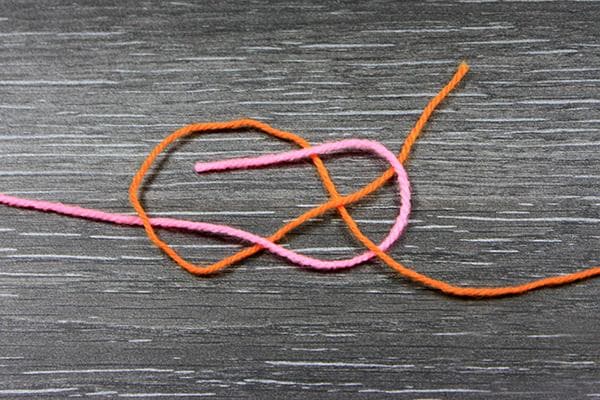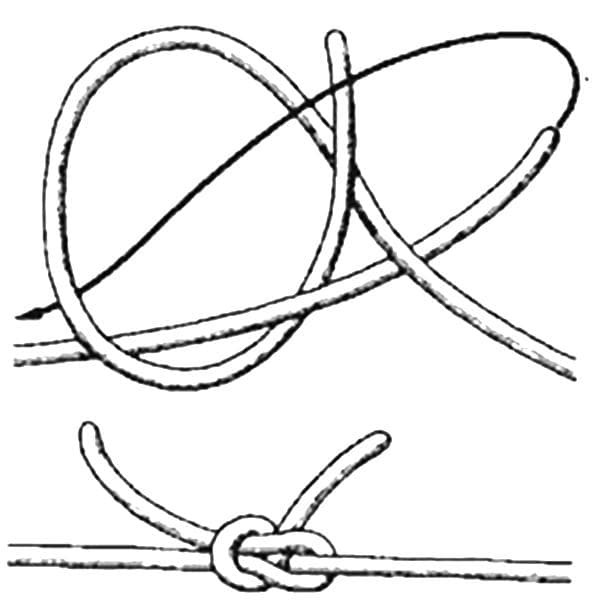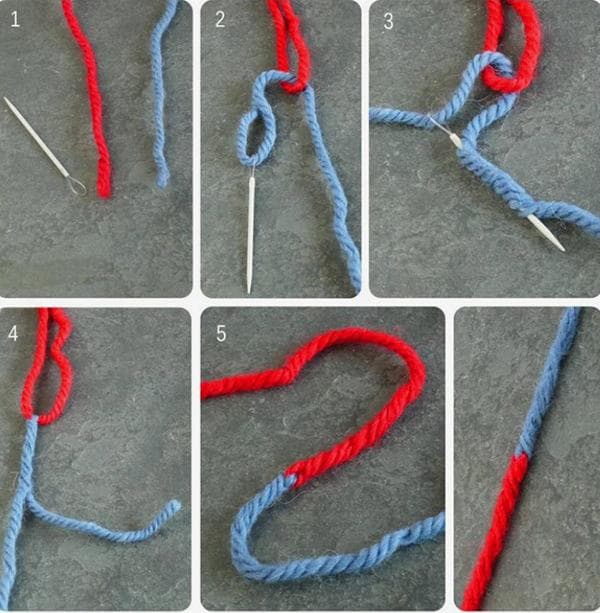How to tie threads correctly when knitting - the most accurate and inconspicuous knot
The technique of knitting invisible knots is incredibly simple. If you spend 5 minutes on the question, you will never again have to guess how to tie threads when knitting. The products will turn out neat and smooth, without any bumps.

weaving knot
There are about 20 original knots in weaving. They are designed to tie up a broken thread and connect a new spool.
A simple weaving knot is notable for its compactness, reliability and speed of execution.
Experienced weavers knit it without stopping the loom. Literally a few seconds pass, and the connected thread slides further. Schematically it looks like this:
It can be used to connect any threads: thin, thick, wool, synthetic, slippery.
How to knit a weaving knot:
- Make a loose loop of thread on the right side. The tip is at the top.
- Insert the left thread into the loop from below.
- Pull it under the right thread and go around it.
- Return to loop from above.
- Pull the ends of the yarn.
- Tighten the knot tightly.
- Trim off any protruding ends.
You can cut off the protruding threads to the very root. The knot will not fall apart.
Connecting threads without knots
The following method is best suited for loose and openwork knitting, where even small and flat knots can be noticeable.
Note: without knots, you can only knit threads with added wool.
What do we have to do:
- Place the ends of the threads to be joined on a hard, flat surface.
- Take a needle and carefully fluff the ends to a length of 10 cm.
- We direct them towards each other and fold them. The contact line should be 10 cm.
- Lightly twist the thread between your fingers so that the fibers adhere to each other.
- Moisten with water and twist a little more.
- Let's dry it. The result is a very neat connection, outwardly indistinguishable from a solid thread.
True, it is better not to test this area for rupture. If you pull the thread in different directions, it will come apart. In the product itself, the problem disappears: the junction is fixed with other threads. You don’t have to worry about the integrity of the knitted item.
Thick twisted threads can be joined into one using a needle with a large eye. To do this, they first cross. The end of the left thread is inserted into the eye of the needle and pulled through the thickness of the fibers on the left side. The right thread is secured in the same way.
Questions and answers
Is it possible not to tie the ends of the threads, but simply put them on top of each other?
This method is used when knitting tightly. It is relatively reliable, but not without its drawbacks. The ends of the threads that are too short may come out, and then a hole will form on the product. Too long “tails” will give unnecessary thickening.
To leave or not to leave “tails”?
Experienced craftswomen advise not to cut the ends of knitted threads at the root. To make a knitted product durable, you need to leave the ends 1–2 cm long, fluff them up and baste them on the wrong side. Also, sometimes the nodules are additionally treated with transparent glue (for example, “Moment Crystal”).
So, the simplest inconspicuous knot is considered to be the weaving knot. You can knit threads with it in less than a minute. Once you do it once, you remember the technique forever.

